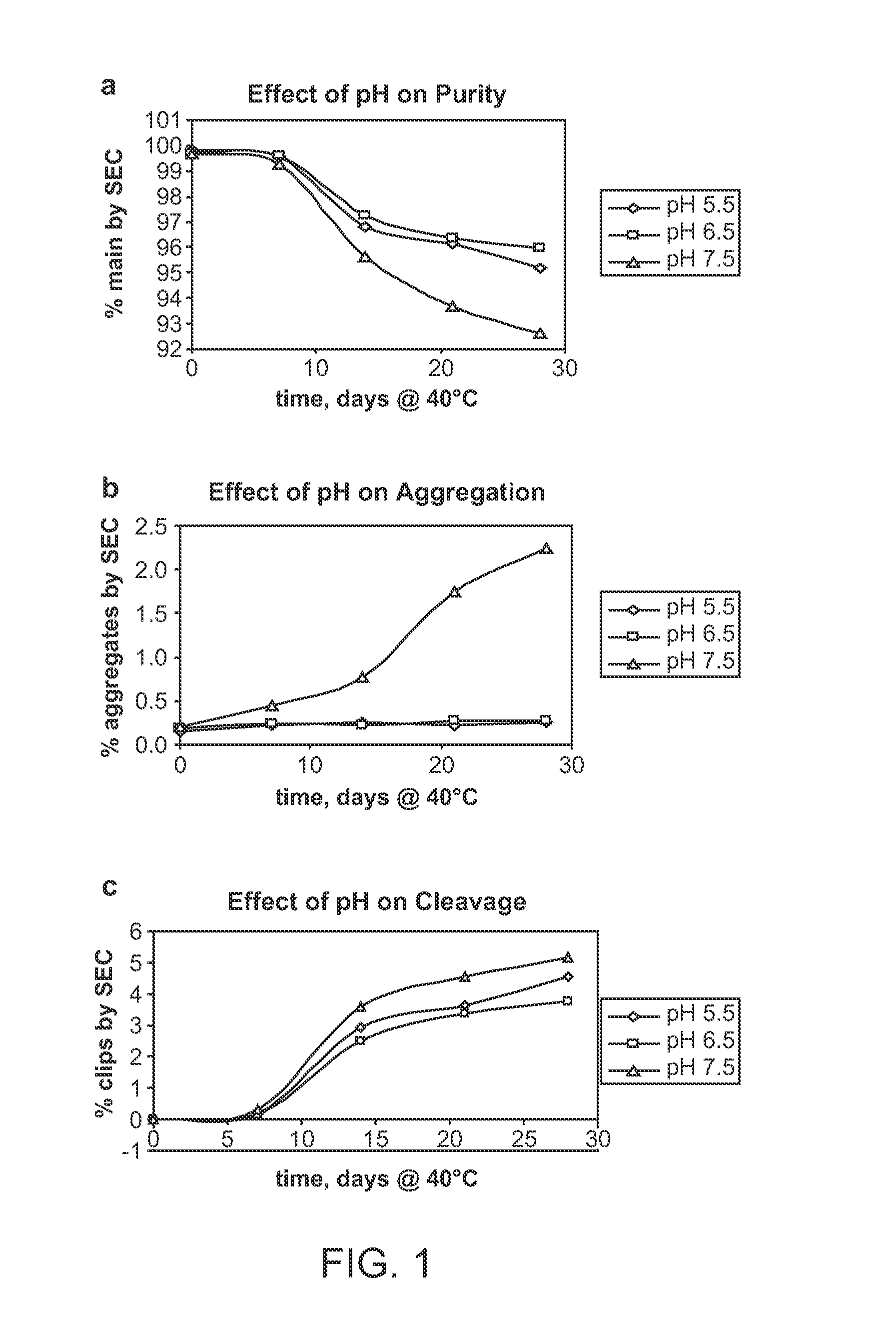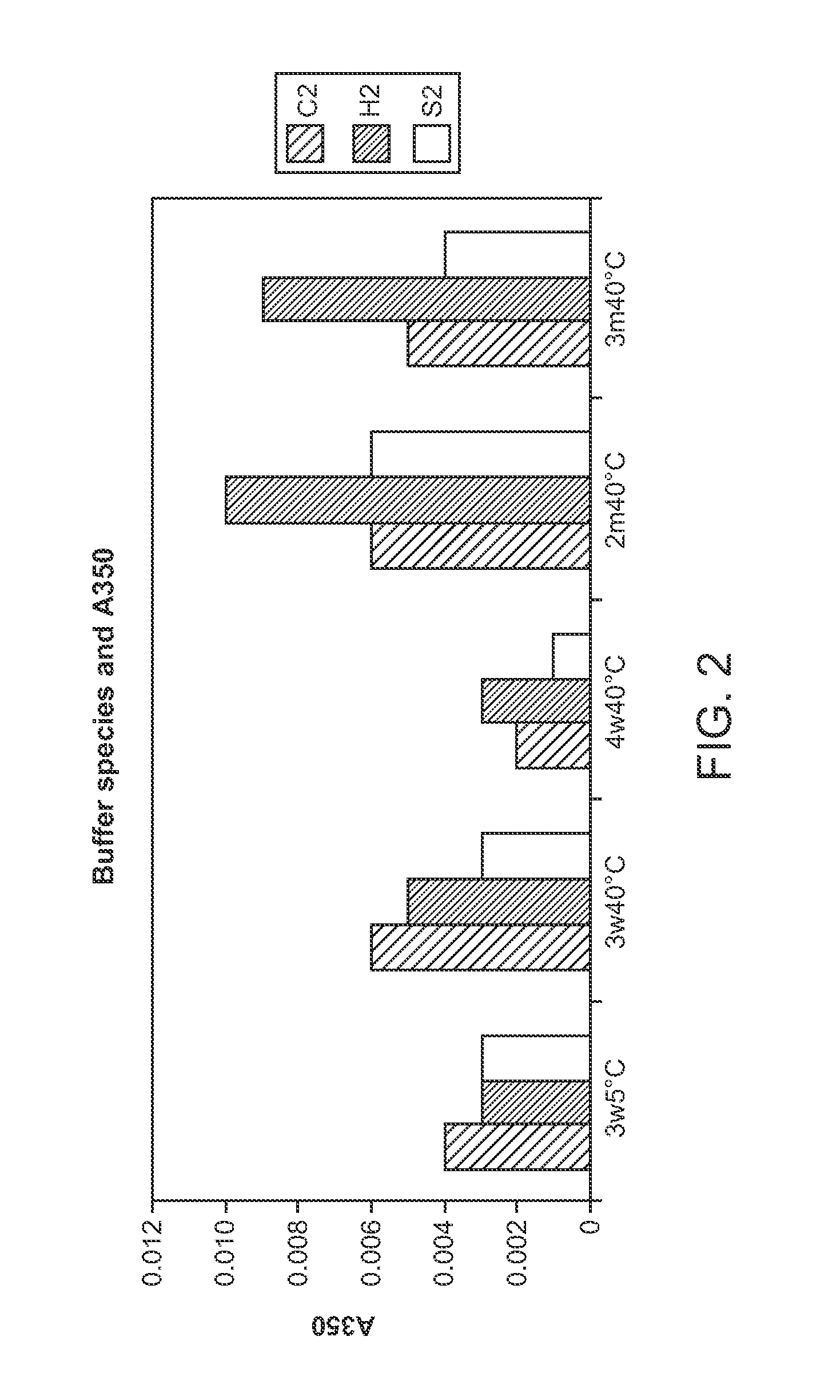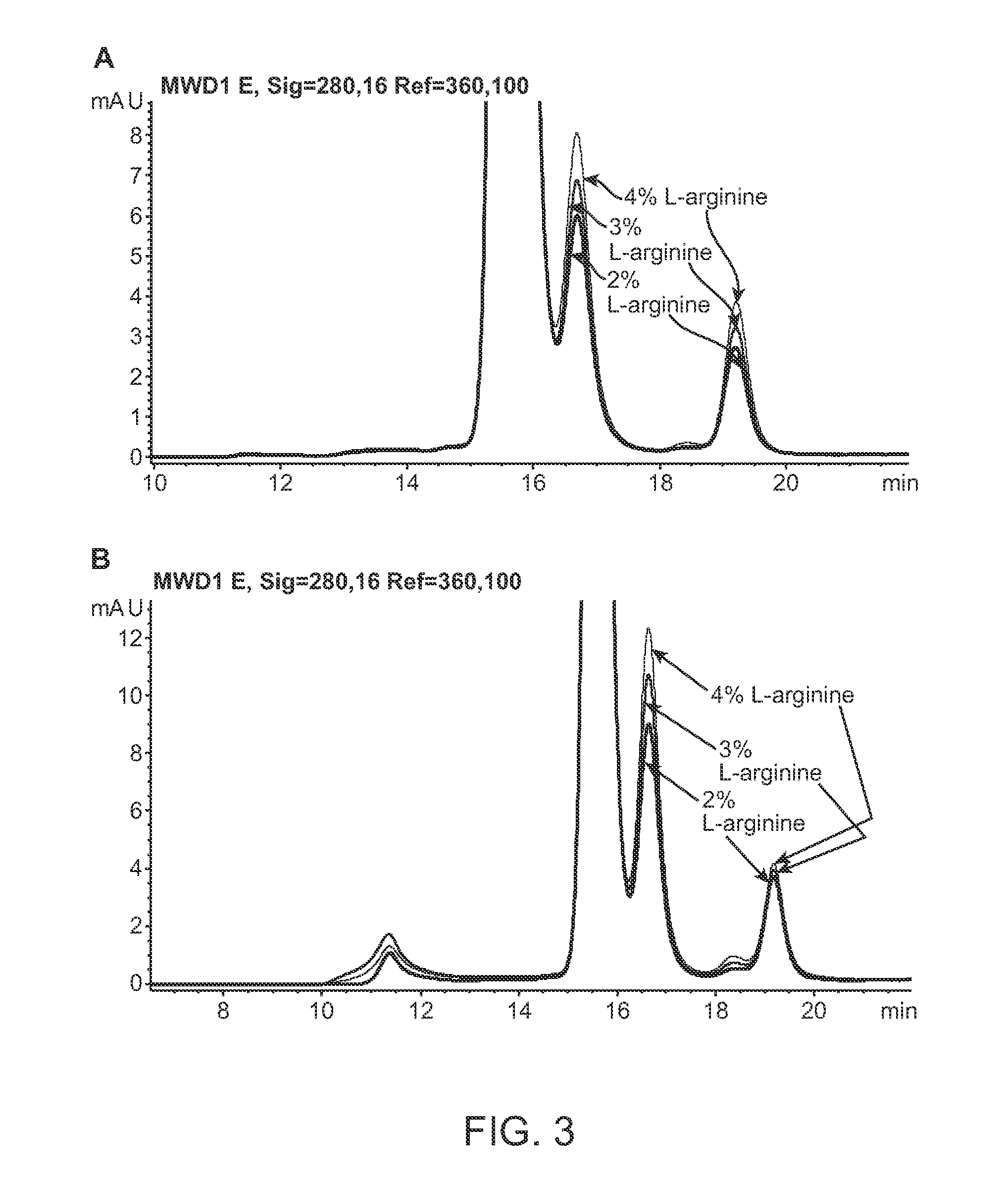Anti-Botulism Antibody Coformulations
a technology of anti-botulism and co-formulation, which is applied in the direction of antibody medical ingredients, drug compositions, peptides, etc., can solve the problems of unfavorable mass civilian or military vaccination, unfavorable post-exposure vaccination, and inability to achieve stable formulations containing multiple antibodies, etc., to achieve the physical stability of the current invention
- Summary
- Abstract
- Description
- Claims
- Application Information
AI Technical Summary
Benefits of technology
Problems solved by technology
Method used
Image
Examples
example 1
Materials and Methods for Development of Formulations for Individual Antibodies
Transient Production of Antibodies
[0231]Antibodies can be transiently expressed in HEK 293 cells and purified by Protein A and Q-Sepharose. Lipofectamine or polyethylenimine (PEI) was used for transient transfection of 293 cells to produce 200 mg of each candidate antibody. Although PEI is a polymer and lipofectamine is lipid based, the process of transfection was very similar for both and did not affect the quality of the MAb protein expressed. Lipofectamine was more efficient for transfection, allowing use of smaller volumes of cells. Lipofectamine transfections were expanded in shake flasks and the PEI was expanded in Wave bioreactors, however, the medium and cell growth conditions were the same for both. Both lipofectamine and PEI were positively charged molecules and should be removed by the protein A step because they should not bind the resin. Further purification with HIC can be used to remove hig...
example 2
Stability Assessment for Formulations of Individual Antibodies
[0234]Visual assessment was made against a black / white background under a top-mounted fluorescent light.
Protein Concentration
[0235]Protein concentration was determined by ultraviolet absorbance at 280 nm.
[0236]The absorbance at 350 nm due to light scattering was measured for neat samples against filtered water on a Shimadzu UV-160U UV-Vis Spectrophotometer.
Size Exclusion High Performance Liquid Chromatography (SEC-HPLC)
[0237]The size-exclusion HPLC method utilized the TSKG 3000 SWXL SEC column manufactured by Toso Hass. A 30 minute isocratic method was used with detection at 214 nm. Two mobile phases were used for early vs. late studies. One mobile phase was 50 mM NaPO4, 0.2 M NaCl, pH 7.0. The other phase was 50 mM NaPO4, 0.1 M (NH4)2SO4, with 5% Acetonitrile, pH 6.8. The flow rate was 0.5 ml / min with a 10 μl injection at 1 mg / ml (10 μg). The percent aggregate and percent clip were reported from...
example 3
Formulation of Individual Antibodies
ABT01
[0245]ABT01 showed limited solubility of approximately 3.3 mg / ml in sodium phosphate buffer (10 mM NaH2PO4 / Na2HPO4, 140 mM NaCl) at pH 5.5, 6.5, and 7.5 ABT01 showed similar thermal transition temperatures upon unfolding (T0 and Tm) at the 3 different pH values. The limited solubility of ABT01 in PBS based buffers made it necessary to screen other more effective solubilizers so that the ABT01 concentration can be increased to allow more options for eventual co-formulation. To this end, five different excipients were chosen for the study of their effects on the solubility and thermal transition temperatures on ABT01. The starting ABT01 solution was dialyzed against each of the five excipients listed in Table 4 which also lists the resulting solubility and DSC data. The 5% L-arginine formulation was the only buffer that resulted in clear antibody solution during the entire dialysis. The other four buffers resulted in cloudiness and precipitatio...
PUM
| Property | Measurement | Unit |
|---|---|---|
| Temperature | aaaaa | aaaaa |
| Temperature | aaaaa | aaaaa |
| Temperature | aaaaa | aaaaa |
Abstract
Description
Claims
Application Information
 Login to View More
Login to View More - R&D
- Intellectual Property
- Life Sciences
- Materials
- Tech Scout
- Unparalleled Data Quality
- Higher Quality Content
- 60% Fewer Hallucinations
Browse by: Latest US Patents, China's latest patents, Technical Efficacy Thesaurus, Application Domain, Technology Topic, Popular Technical Reports.
© 2025 PatSnap. All rights reserved.Legal|Privacy policy|Modern Slavery Act Transparency Statement|Sitemap|About US| Contact US: help@patsnap.com



